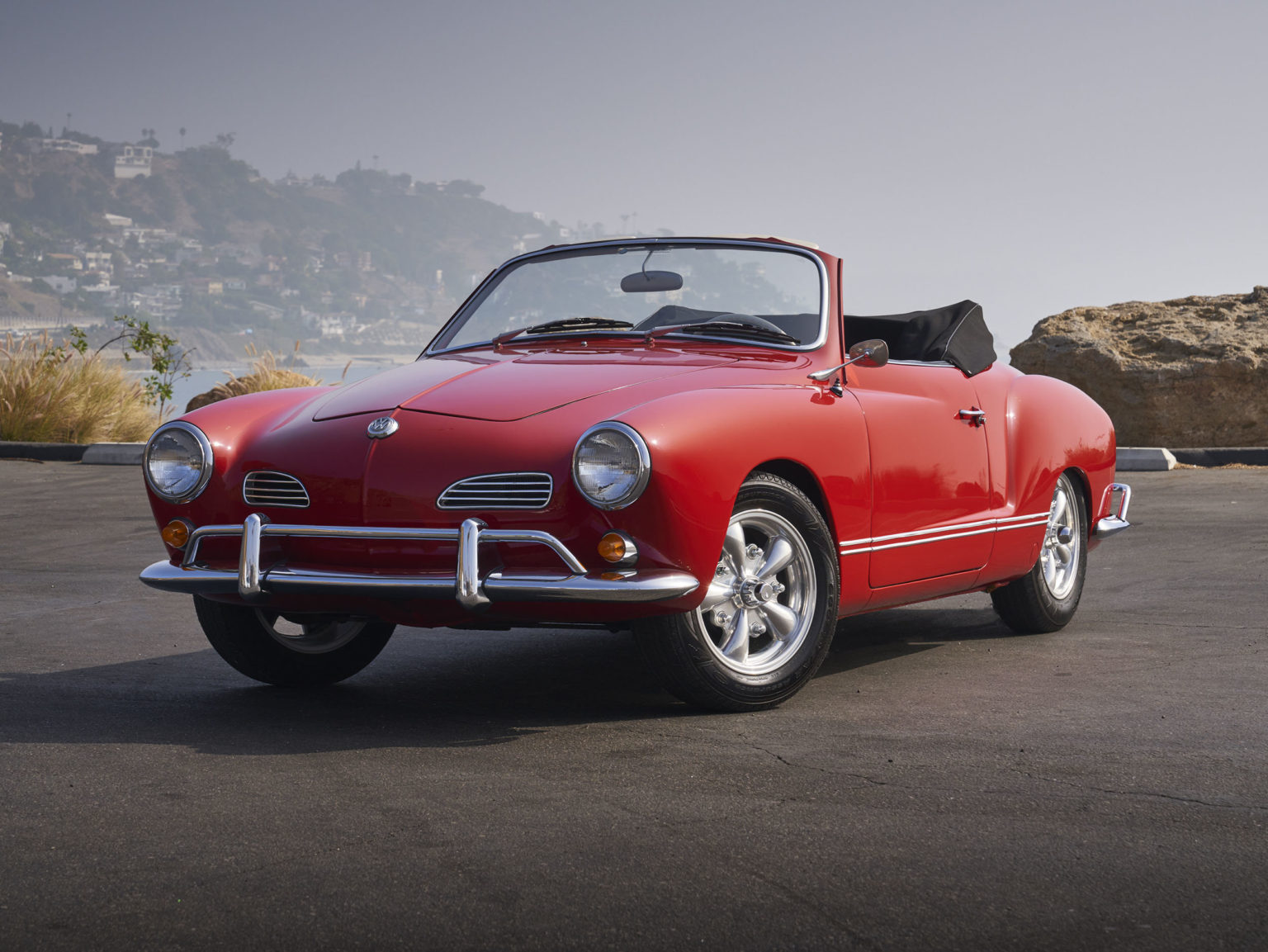The Volkswagen Beetle can be called a lot of things but, it’s not beautiful. In fact, throughout automotive history, few Volkswagens have been good looking. Quirky, sure. Sexy? Sophisticated? Only one comes to mind: Karmann Ghia.
Eighteen years after VW was founded, the first Karmann Ghia was produced. A coupe, it had the heart and underpinnings of the German Beetle. On top, and to the outside world, it was Italian.
Known as the Type 14, the Karmann Ghia was the brainchild of Wilhelm Karmann, a contract car manufacturer who got his start building convertibles. Karmann was the sole supplier of Beetle convertibles, which were made at his factory in Osnabruck, Germany.
The prototype Karmann Ghia was very nearly the same as the model that made it into production.Photo by Tim Hoppe / GARP
In 1953, Karmann met with Carrozzeria Ghia owner Luigi Segre at an auto show and convinced him to take the chassis of a Beetle and design a convertible sports car while talking with the company’s owner. Ghia, an automotive design house and coachbuilding firm in Turin, Italy, had risen to notoriety as a contemporary of Pininfarina by building aluminum bodied cars like the Alfa Romeo 6C 1500, which one the Mille Miglia in 1929, and special bodied models for Lancia and Fiat.
Ghia worked in secret for four months, finally showing Karmann the result. Instead of a convertible, it was a coupe. Ghia had customized the platform and delivered, nearly one year to the day after the first conversation regarding the car between Karmann and Segre.
Karmann shared the prototype with Volkswagen’s Managing Director at the time, Heinrich Nordhoff, and the two agreed to build a production 2+2 seater coupe and convertible in November 1953. From Volkswagen:
“The prototype Karmann Ghia looked nothing like the Beetle. An elegant nose and front cargo area flowed smoothly into a sizable seating area for two passengers. The thin roof pillars and gracious curves gave the Ghia a sense of motion even at rest, and it has a sporty stance because the body sits seven inches lower than the Beetle. The Beetle engine was stock, but the suspension was altered with a front sway bar and different springs for better handling response. While some of the Karmann Ghia’s lines were inspired by other models, it was clearly its own model – and a striking departure for Volkswagen.”
Refinements were made by a variety of designers over the next year and a half. The model debuted to the public at the Paris and Frankfurt auto shows in 1955. It had a fresh set of chrome vents on the nose but otherwise left most of the body intact.
The Karmannn Ghia was produced at Karmann’s Osnabruck plant.Photo courtesy of Volkswagen AG
Engineers gave the car 36 more horsepower than the Beetle and 150 more pounds of weight. Like the Beetle, it wasn’t fast. One magazine reported that it took a whopping 28 seconds to get to 60 mph off the line.
Each Karmann Ghia took hours of hand-built metalworking to come to life. Production began in August 1955 and the first model reached U.S. shores in 1956. VW sold the model for $900 more than the Beetle. It was a hit.
VW would end up building nearly half a million Karmann Ghias over the next 19 years – 362,601 coupes and 80,881 convertibles. Nearly 279,000 of those were sold in the U.S.
The Karmann Ghia had design that was very of its time.Photo courtesy of Volkswagen AG
Throughout its run, the looks of the model changed slightly but the basic outline never changes. A second Karmann Ghia was made, the Type 34, but it never was officially sold in the U.S.









